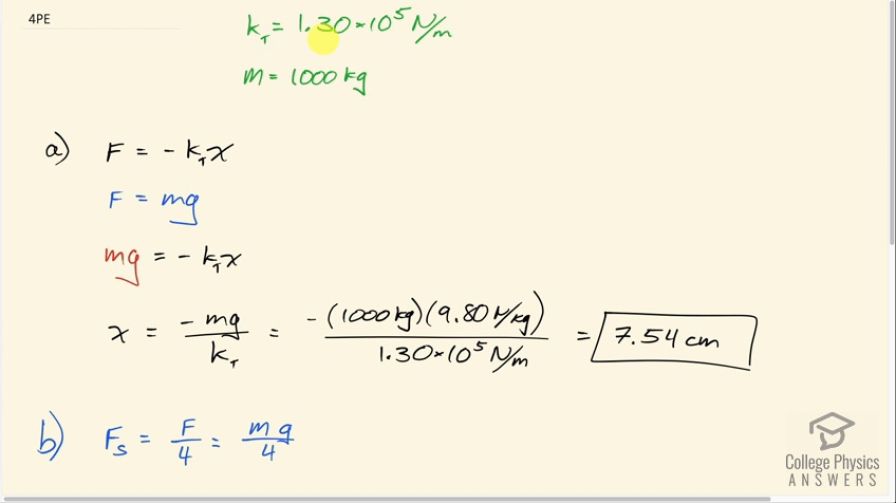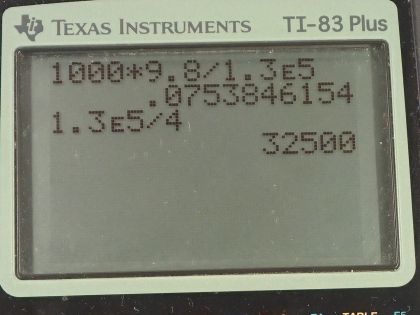Question
(a) The springs of a pickup truck act like a single spring
with a force constant of . By how much will
the truck be depressed by its maximum load of 1000 kg?
(b) If the pickup truck has four identical springs, what is the force constant of each?
Final Answer
Solution video
OpenStax College Physics for AP® Courses, Chapter 16, Problem 4 (Problems & Exercises)

vote with a rating of
votes with an average rating of
.
Calculator Screenshots
Video Transcript
This is College Physics Answers with Shaun Dychko. All of the springs combined in total on the pickup truck have a spring constant of 1.30 times 10 to the 5 newtons per meter and the maximum mass that the truck can handle loaded into the flatbed is 1000 kilograms and the question in part (a) is by how much will the truck be depressed by its maximum load? So the force that the suspension springs are going to be exerting upwards is equal to negative of the total spring constant times the displacement downwards, x, and this force will be the weight of the load which is its mass times g. So we substitute in mg and that equals negative k Tx and we'll solve for x by dividing both sides by negative of the total spring constant so x is negative mg over k T. So that's negative 1000 kilograms times 9.80 newtons per kilogram divided by 1.30 times 10 to the 5 newtons per meter and I suppose we should put a negative sign in front of there to say that this displacement is in the downwards direction so that goes down 7.54 centimeters. Part (b) asks if the pickup truck has four identical springs, what is the force constant of each? So the force of a single spring is going to be one-quarter of the total force that all force brings together exert. And so that's the mass of the load times g— that is the weight of the load, in other words— divided by 4. And this force due to a single spring is also the negative of the spring constant of a single spring times the amount that it's compressed or depressed downwards, x. So we substitute in negative k Sx in place of F S and we write that here equals mg over 4 and then we also make a substitution for x because we found it in part (a) is negative mg over the total spring constant k T. So we plug that in for x here and we see that we can cancel the mg's on both sides— this negative and this negative makes a positive— and so we can multiply both sides by k T over mg and we get that the spring constant of a single spring is the total spring constant divided by 4. So that's 1.30 times 10 to the 5 newtons per meter over 4 which is 3.25 times 10 to the 4 newtons per meter.
